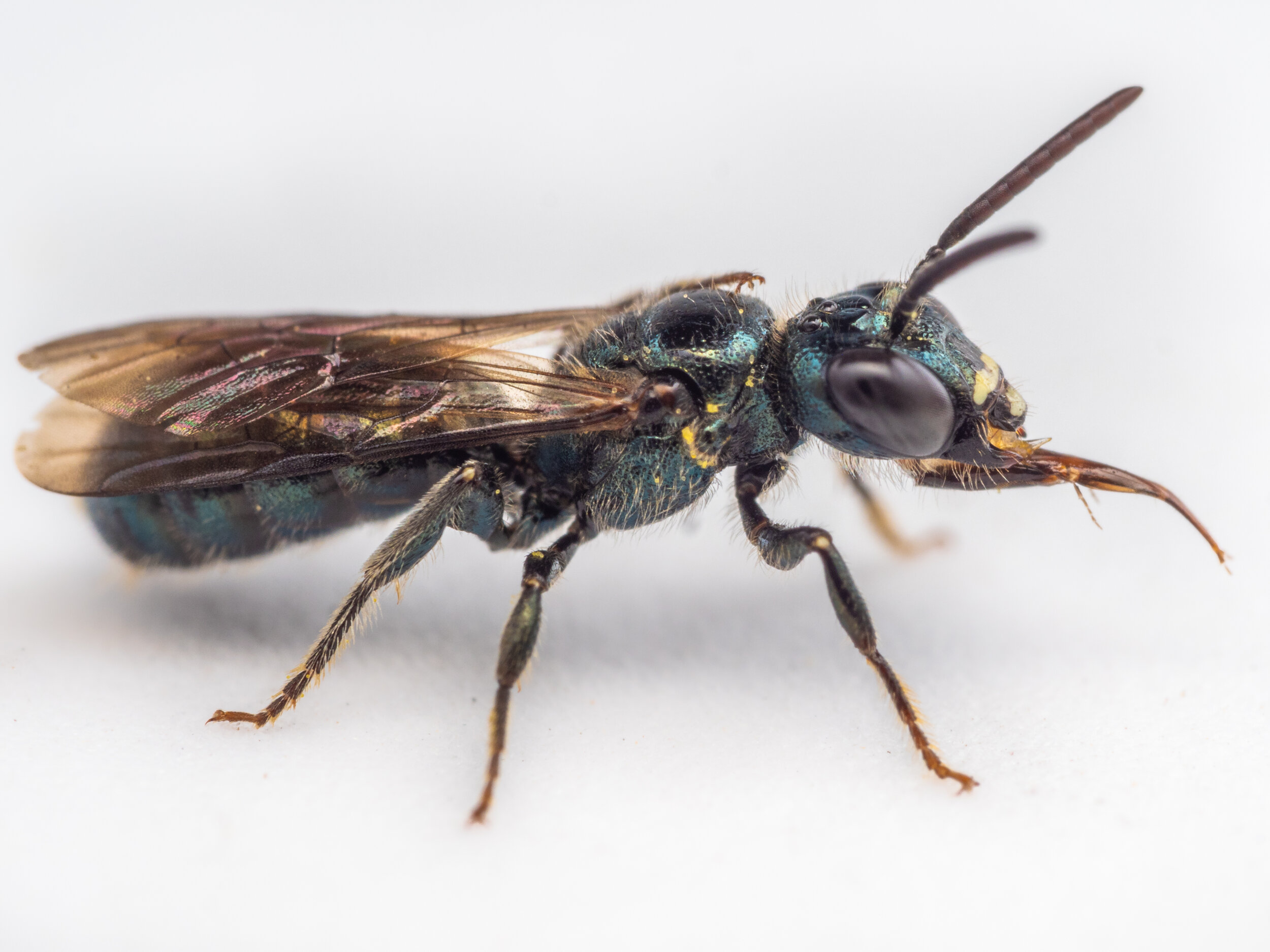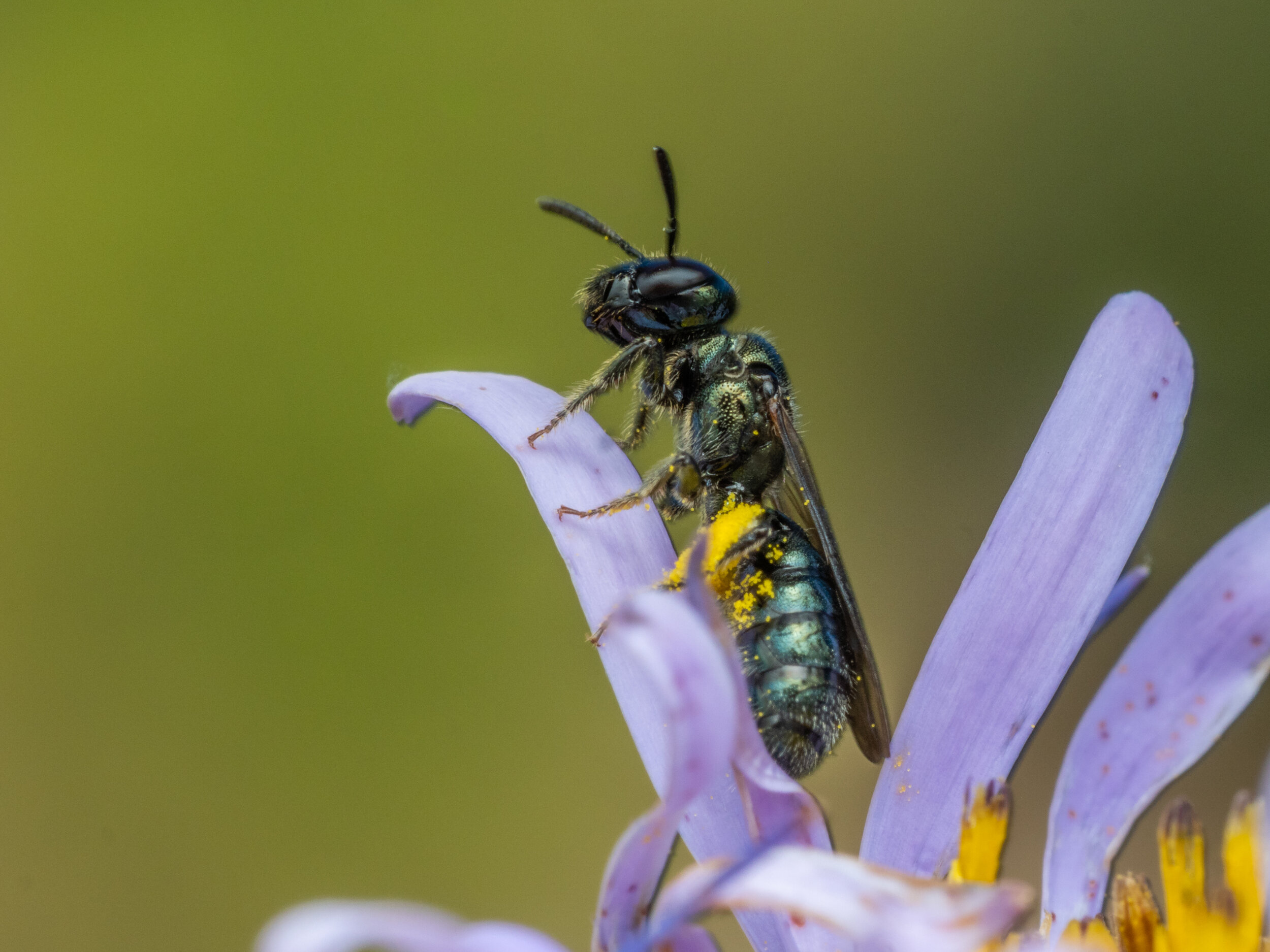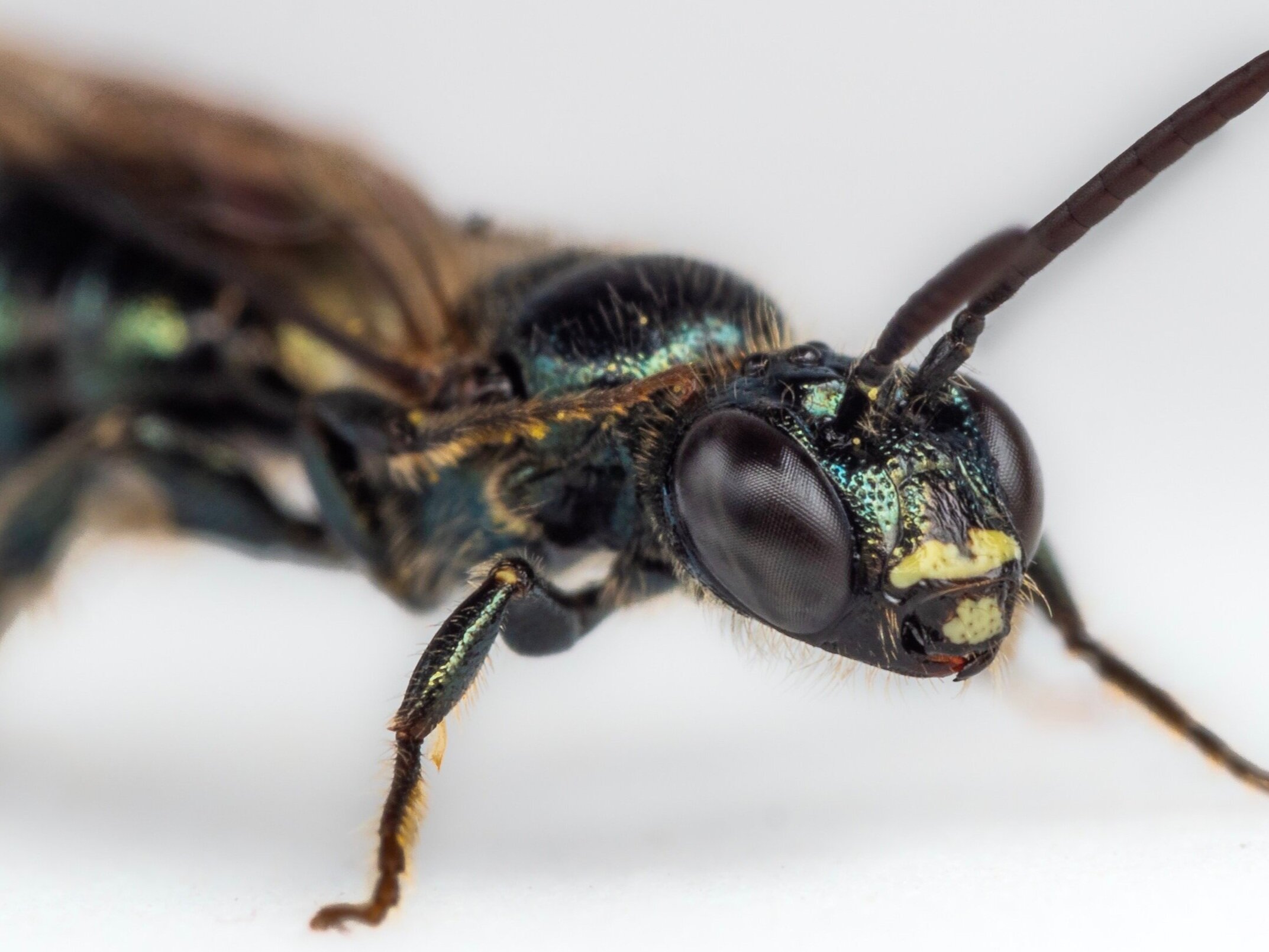Meet the small carpenter bee! These tiny blue bees are industrious excavators, chewing through dead wood and pith to make their nests.
Scientific name: Ceratina spp.
Family: Apidae
Species range: Small carpenter bees are found all across the US, unlike their larger cousins - the large carpenter bees (Xylocopa spp). We have about 20 species of Ceratina across the United States.

Nesting habits: Small carpenter bees chew through the pith of dried stems and sticks to make their nests. They will carve out individual chambers for each of their young, providing each egg with a pollen and nectar mash for food. Some species are subsocial and will nest near one another, and there are a few species that are considered weakly eusocial that will share in some of the nesting duties. Females overwinter as adults in hollowed out stems, and in spring they further excavate these same stems to make their nests!

Preferred forage: Small carpenter bees have an affinity for flowers from the Aster family - gum weeds (Grindelia genus), in particular. They will feed on a wide range of flowers, though.
Active season: Small carpenter bees are active from mid-spring to early fall.
Fun fact: Since these bees lay their oldest eggs furthest back in their stem nest, the oldest emerging bee must move each of its siblings out of the way as it emerges. The emerging bee will carefully move each pupating larvae down until it has worked its way out of the nest. Because of this, the process of emergence can take several days!
